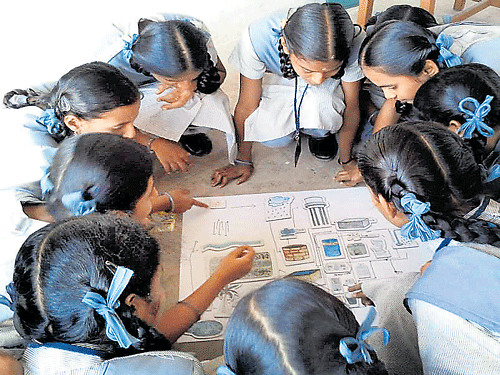
The gap between urban and rural Karnataka when it comes to collegiate education is huge and yawning. The total number of graduates in urban Karnataka stands at 13.67 per cent of the total population of 5.99 crore, compared to a meagre 3.61 per cent in rural pockets.
This is one of the outcomes of the state-level details of the Socio Economic and Caste Census (SECC) -2011 released in Bengaluru on Monday. The census was funded by the Centre and was conducted by the State Rural Development and Panchayat Raj Department (RDPR).
The data indicates that the government has a lot more to do, especially in rural areas, when it comes to higher education.
In the rural pockets of Raichur for instance, the total number of graduates is only 1.82 per cent.
Raichur has 1.76 per cent of the total population of the state. The total population excludes people living in defence areas.
The highest literacy rate is recorded by urban areas in Dakshina Kannada district - 88.71 per cent, while the lowest number of literates are in urban areas of Yadgir district - 43.68 per cent. In Bengaluru urban, the literacy rate is 87.93 per cent.
The details released by Chief Minister Siddaramaiah and RDPR Minister H K Patil revealed that urban pockets are much better off with Bengaluru (urban) having the highest number of graduates at 16.63 lakh or 18.32 per cent of the population.
Divide lessens
When it comes to amenities and assets, the divide between urban and rural pockets is much less. As many as 77.38 per cent of the rural households have mobile phones, compared to 81.4 per cent in urban areas.
As many as 23.75 per cent or 19.11 lakh households have motor vehicles, compared to 38.89 per cent in urban areas. However, only 5.95 per cent of the households in rural areas have refrigerators, compared to 41.16 per cent in urban areas.
DH News Service